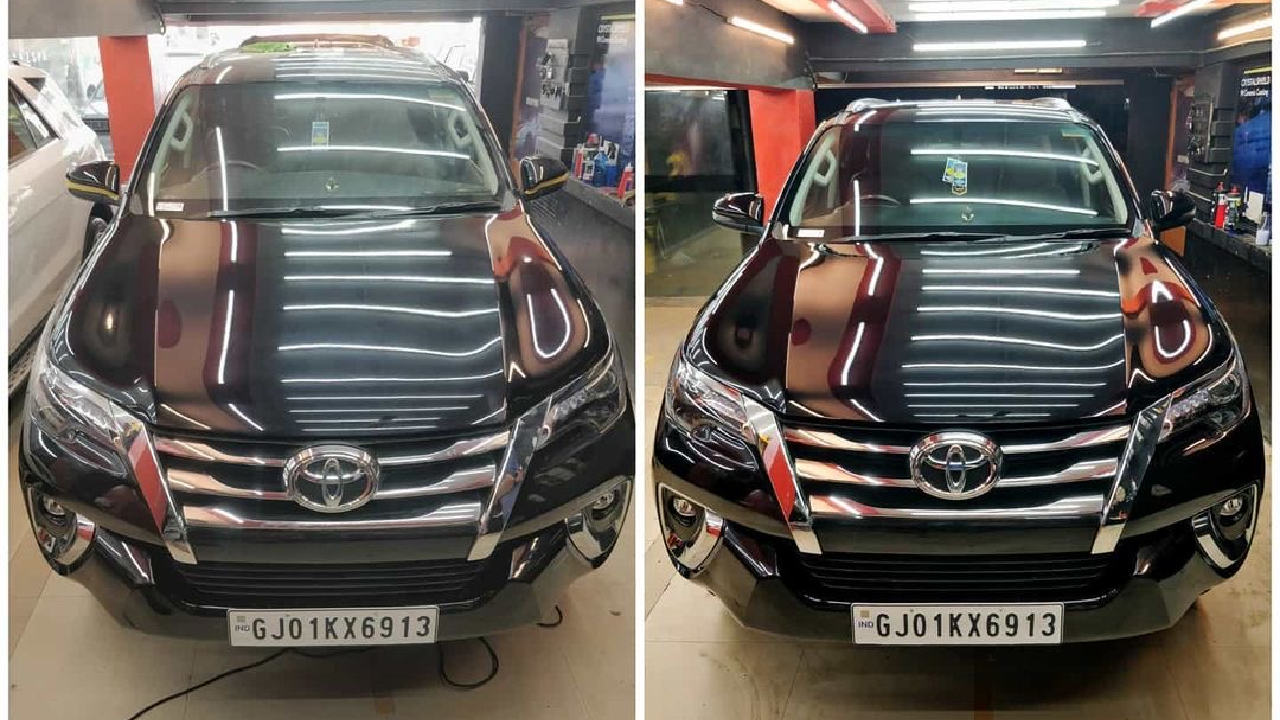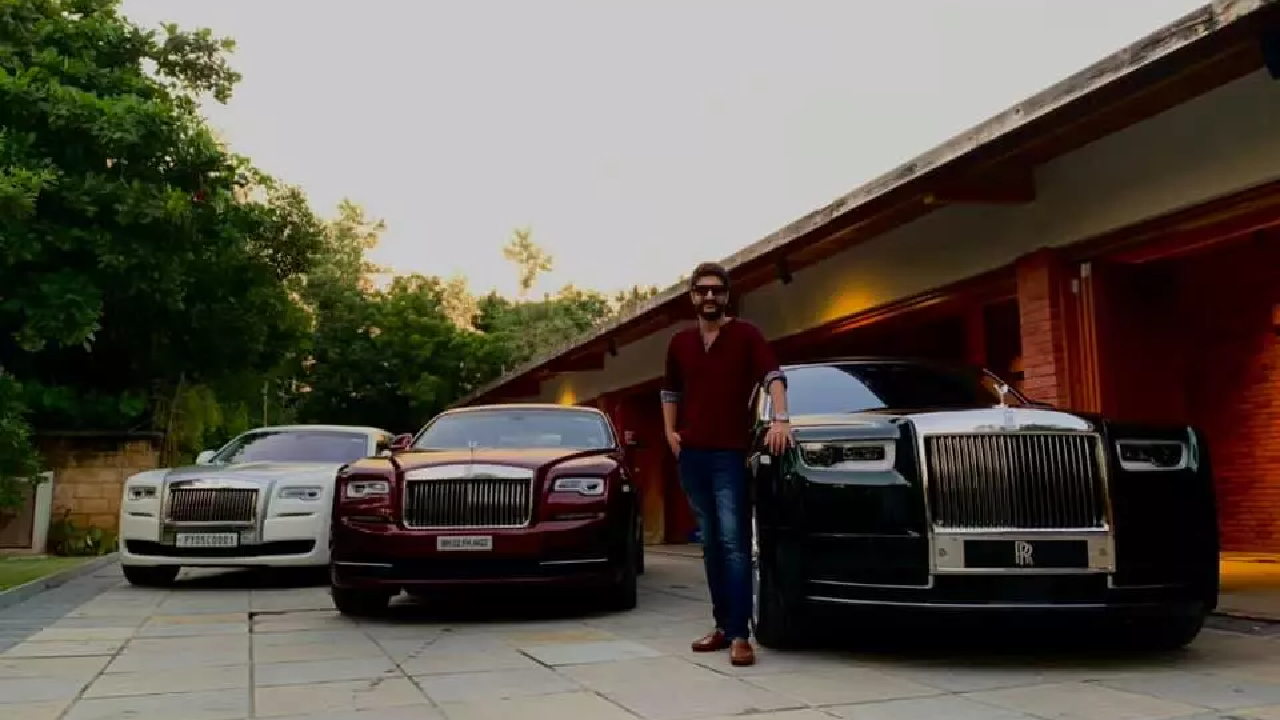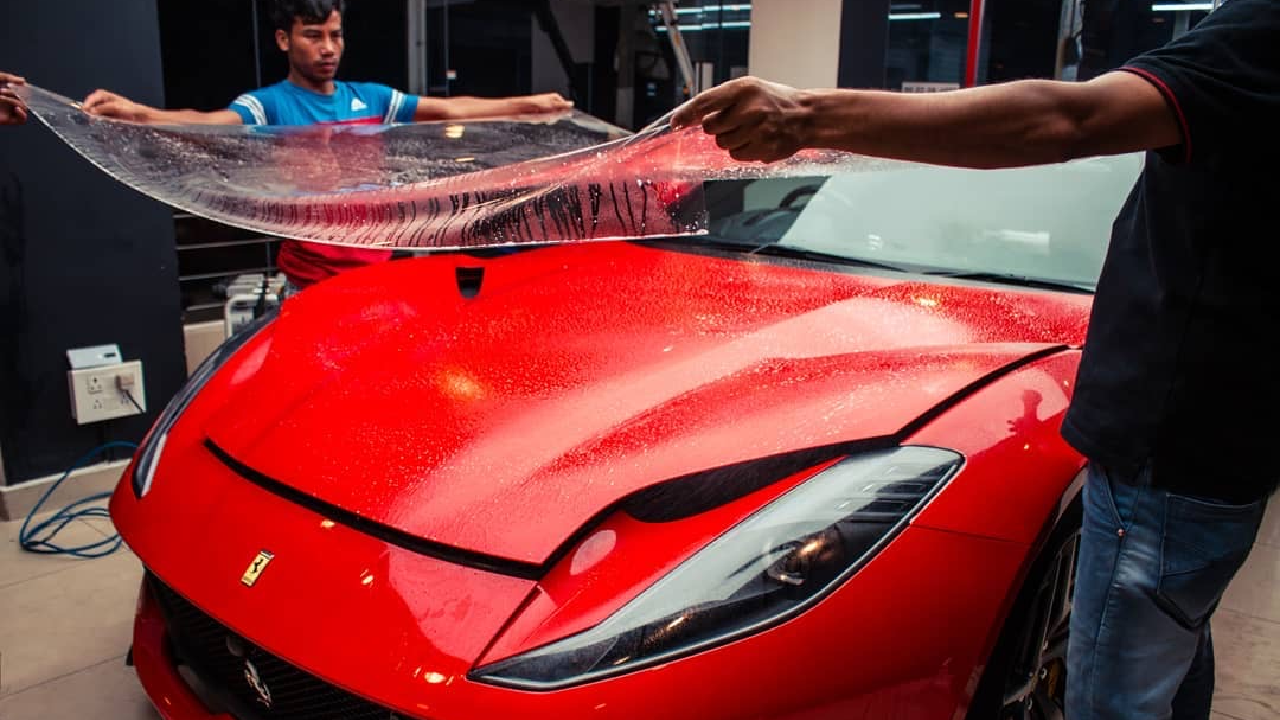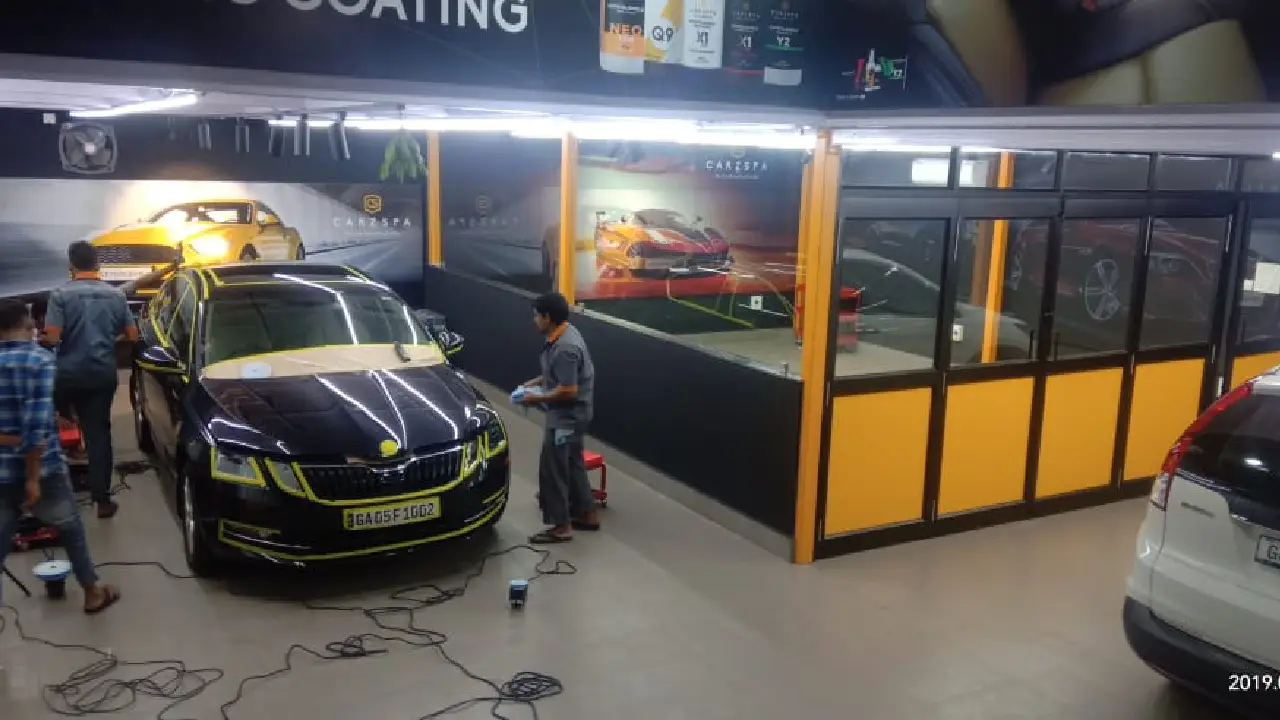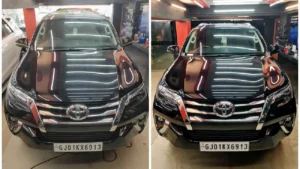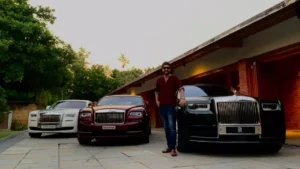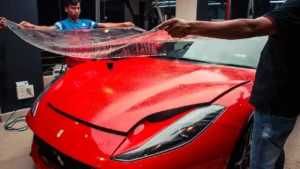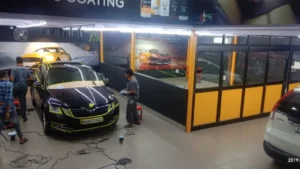Driving on Indian roads during the day can be challenging for any driver, especially during the summer, when the heat can penetrate the window glass and spike the cabin temperature, which is why it is common for car owners to get some form of sun protection film installed on the windshields and sunroof.
India has some strict regulations when it comes to car window films. Choosing the right car window tint isn’t just about comfort or style; it’s about compliance. The Supreme Court has prohibited any film that reduces visibility below set limits for front and rear windshields and side windows.
This guide will walk you through the different types of car window tints and sun protection films available and help you make an informed, lawful choice for your vehicle.
Table of contents
- Why People Use Car Window Tint?
- Understanding RTO-Approved Car Window Film
- Types of Car Window Tint Available in India
- Is Blue Film for Car Windows Legal?
- How to Choose the Right Car Window Tint or Film
- Professional Installation vs DIY
- CarzSpa’s Aegis Sun Protection Film
- Maintaining Your Car Window Tint or Film
- Conclusion
- Frequently Asked Questions
Why People Use Car Window Tint?
Before looking at the types, let’s understand why car window tinting is so popular in India:
- Heat Reduction: Blocks up to 90% of heat from entering your car
- UV Protection: Shields you and your car’s interior from harmful UV rays
- Glare Control: Reduces eye strain during day and night driving
- Interior Protection: Prevents fading and cracking of your dashboard and seats
- Enhanced Look: Gives your car a sleek, premium appearance
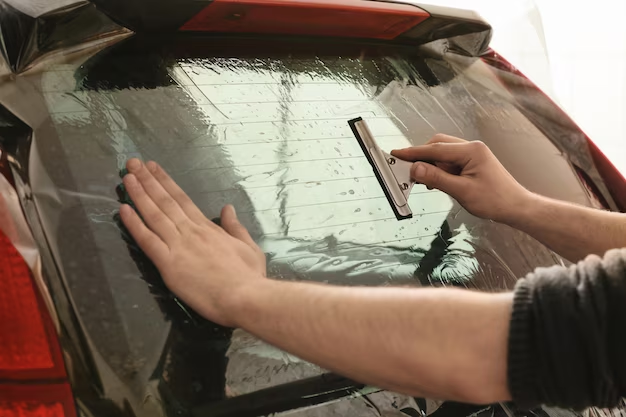
Understanding RTO-Approved Car Window Film
The rules regarding car window tint in India are quite specific, laid out by the Central Motor Vehicles Rules, 1989. It’s essential to get this right to avoid fines or even more serious consequences. Here’s the breakdown of the legal Visible Light Transmission (VLT) percentages you need to be aware of:
- Side Windows: Must allow a minimum of 50% of visible light transmission (VLT) to pass through. This means the tint can block up to 50% of the light.
- Front & Rear Windshields: Must allow a minimum of 70% of visible light to pass through. This means the tint on your windshields must be much lighter.
The key takeaway here is that if you are in the market, looking around for RTO-approved window films, always choose the ones that comply with the legalities under CMVR. Don’t just choose any window tint that seems to darken the glass, as you could end up paying fines, and repeat offences could invite suspension of your driver’s license, too.
Therefore, it’s crucial to always ask for proper certification when you’re purchasing your car window film.
Types of Car Window Tint Available in India
1. Dyed Window Tint
The most basic and affordable type of window tint is made with layers of dye.
Pros:
- Most budget-friendly option
- Good privacy
- Simple, non-reflective appearance
- Basic heat reduction
Cons:
- Tends to fade over time, especially in India’s harsh sun
- Less effective at blocking heat compared to other options
- May need replacement every 2-3 years
Best for: Budget-conscious car owners looking for privacy and basic sun protection.
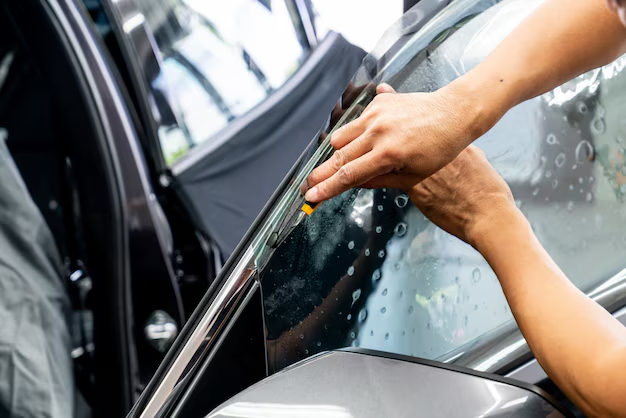
2. Metalised Window Tint
Contains tiny metal particles that reflect sunlight away from your car.
Pros:
- Excellent at reflecting heat
- Very scratch-resistant and durable
- Strengthens windows against breakage
- Doesn’t fade easily
Cons:
- Can interfere with mobile signals, GPS, and radio reception
- Has a somewhat shiny, reflective appearance
- Slightly more expensive than dyed tint
Best for: Car owners prioritising durability and heat rejection over mobile connectivity.
3. Carbon Window Tint
Contains carbon particles that block infrared light (heat) effectively.
Pros:
- Excellent heat blocking (up to 40% better than dyed films)
- Matte finish with no shine (popular look in India)
- No signal interference with electronics
- Doesn’t fade over time
- Good UV protection
Cons:
- More expensive than dyed or metalised options
- Installation requires professional expertise
Best for: Car owners wanting quality performance without the mirror-like look of metalised tint.
4. Ceramic Window Tint
The most advanced sun protection film containing non-conductive ceramic particles.
Pros:
- Superior heat rejection (blocks up to 50% of solar heat)
- Blocks 99% of harmful UV rays
- No interference with electronics
- Clearest visibility with the least colour distortion
- Extremely durable (can last 7-10 years)
Cons:
- Most expensive option
- Requires professional installation by experts
Best for: Luxury car owners and those who want the absolute best protection regardless of cost.
5. Hybrid Window Tint
Combines dyed film with metallic particles for balanced performance.
Pros:
- Better performance than dyed film
- Less signal interference than a fully metalised tint
- More affordable than carbon or ceramic options
- Good middle ground for heat rejection
Cons:
- Not as effective as ceramic or carbon
- May have slight signal interference Medium durability
Best for: Car owners seeking a balance between performance and budget.
Is Blue Film for Car Windows Legal in India?
A common question we get at CarzSpa is about blue film for car windows. Despite its popularity, it’s important to note that colored films, including blue tints, are not permitted under current Indian law if they don’t meet the VLT standards set by the government. Always opt for legal options that comply with the legalities under CMVR.
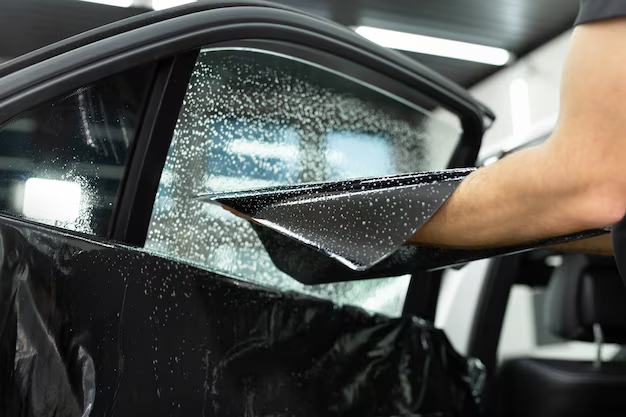
How to Choose the Right Car Window Tint
Selecting the right car window film depends on several factors:
- Your Budget: Prices range from ₹5,000 for basic dyed films to ₹25,000+ for premium ceramic films for a mid-sized car.
- Primary Need:
- Maximum heat rejection: Choose ceramic or carbon
- Basic sun protection on a budget: Dyed or hybrid
- Durability and strength: Metalised or ceramic
- Legal Compliance: Always ensure your chosen tint meets legalities under CMVR for appropriate VLT levels.
- Vehicle Type: Luxury cars benefit more from high-quality ceramic or carbon films that preserve the look while providing protection.
- Local Climate: In extremely hot regions like Rajasthan or Gujarat, invest in ceramic or carbon for better heat protection.
Professional Installation vs DIY
While DIY kits are available, professional installation of car window tint is strongly recommended for several reasons:
- Ensures bubble-free, perfect application
- Professionals understand legal requirements
- Proper preparation prevents peeling and early damage
- Higher quality materials and a proper warranty
- Experience with different car models
CarzSpa's Aegis Sun Protection Film
At CarzSpa, we offer premium Aegis sun protection film solutions designed specifically for Indian conditions:
1. K70 Carbon Window Film
- Stylish matte finish
- No interference with mobile signals
- Medium price range with long-lasting performance
2. CX70 Ceramic Window Film
- Our premium offering
- Maximum heat rejection (blocks up to 90% of infrared heat)
- 99% UV protection
- Superior clarity with minimal colour distortion
- Long warranty up to 7 years
Some might call it RTO-approved car window film since both comply with the guidelines and regulations under CMVR to ensure you stay on the right side of the law while enjoying optimal protection.
Maintaining Your Car Window Tint
To get the most out of your car window film investment, follow these essential do’s and don’ts:
DOs for Window Film Care:
- Wait Before Rolling Windows Down: Allow at least 48 hours before rolling down your windows to let the film fully cure and adhere properly.
- Use Proper Cleaning Products: Clean only with soft microfiber cloths and ammonia-free glass cleaners to avoid damaging the film.
- Park Smart: Park in the shade whenever possible to extend the life of the film and reduce stress during the curing period.
- Gentle Regular Cleaning: Gently wipe off dust or smudges regularly—keeping the film clean helps maintain clarity and performance.
DON'Ts for Window Film Care:
- Don’t Wash Immediately: Avoid washing the windows for at least 7 days after installation to allow complete curing.
- Don’t Use Harsh Materials: Never use abrasive scrubbers, rough cloths, or harsh chemicals that can scratch or degrade the film.
- Don’t Apply Stickers: Avoid applying stickers or suction mounts on the filmed surface, as this can cause the film to peel or get damaged.
Following these simple maintenance guidelines will ensure your car window tint continues to provide excellent heat rejection and UV protection for years to come.
Conclusion
Choosing the right car window tint is an important decision that affects your driving comfort, vehicle protection, and even legal compliance. From budget-friendly dyed films to premium ceramic options, there’s a sun protection film suited for every need and budget.
At CarzSpa Detailing Studio, we understand the unique challenges Indian drivers face with the harsh sun and varying regulations. Our expert technicians can help you select and professionally install the perfect window tint solution for your vehicle.
Visit your nearest CarzSpa studio today to explore our range of CMVR-compliant car window film options and experience the difference quality makes.
Frequently Asked Questions
1. How much does car window tinting cost in India?
The cost varies depending on the type of film and vehicle size, ranging from ₹5,000 for basic dyed films to ₹25,000+ for premium ceramic tints for a mid-sized car.
2. Is car window tint legal in India?
Yes, but only if it meets the VLT standards set by the government: 70% for front and rear windshields and 50% for side windows.
3. How long does car window tint last?
Dyed films typically last 2-3 years, while premium ceramic films can last 7-10 years with proper care.
4. Can I install car window film myself?
While DIY kits are available, professional installation is strongly recommended for best results and to ensure legal compliance.
5. Will window tint reduce my car’s AC consumption?
Yes, quality sun protection film can reduce interior heat by up to 50%, making your AC more efficient and reducing fuel consumption.


